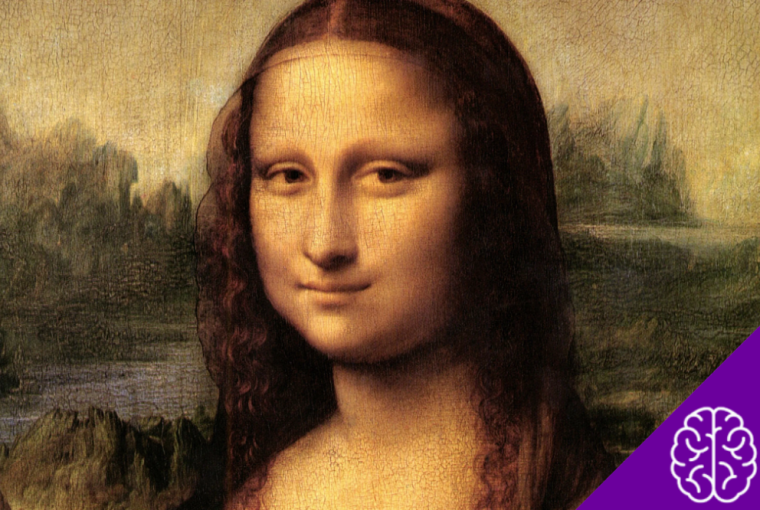The enigmatic Mona Lisa has captivated audiences for centuries. Featured prominently in the Louvre Museum in Paris, this masterpiece by Leonardo da Vinci is often regarded as the most famous painting in the world.
But beyond its incredible artistry and historical significance lies a realm of unexpected details, hidden secrets, and fascinating theories. What is it about the Mona Lisa that continues to intrigue art enthusiasts and casual viewers alike? Today, we’ll uncover her mysteries—from her enigmatic smile to the secrets painted layer by layer.
Why the Mona Lisa Is a Timeless Masterpiece
The Mona Lisa, painted between 1503 and 1506, is renowned for inspiring intrigue, debate, and wonder. One reason for its timeless appeal lies in Leonardo da Vinci’s revolutionary artistic techniques.
Using sfumato, a method where colors and tones blend seamlessly, da Vinci created subtle transitions between light and shadow. This innovative approach gave the Mona Lisa her lifelike quality, making her expression appear fluid and dynamic.
However, artistic technique alone doesn’t explain why this painting has fascinated the world for over 500 years. Seemingly simple at first glance, it’s the underlying complexity of this portrait that triggers curiosity. There’s more to the Mona Lisa than what meets the eye.
The Mystery Behind the Enigmatic Smile
One of the Mona Lisa’s most iconic features is her elusive smile. Depending on the angle or lighting, her expression seems to shift between a subtle grin and serene neutrality. How is this possible?
Researchers have credited this optical illusion to da Vinci’s mastery of sfumato. Unlike sharp lines, the blurred edges and soft shading around her lips blur perception. What you see depends on the position of your eyes and the surrounding light, creating an illusion of movement in her expression.
Another theory suggests that her smile reflects da Vinci’s understanding of human anatomy. A keen observer of facial muscles, he captured the intricacies of even the smallest movements, lending her smile its realistic complexity. The mysterious smile has driven countless interpretations, from symbolic meanings of joy to deeper explorations of identity and emotion.
Still, some speculate that her smile is not just technical magic but an intentional psychological ploy. By leaving her smile open to interpretation, da Vinci invites viewers to project emotions onto her, ensuring an endless debate about her mood and story.
Who Was the Woman Behind the Portrait?
At the center of the mystery surrounding the Mona Lisa lies her identity. Most art historians agree that the portrait depicts Lisa Gherardini, a Florentine woman who was the wife of a wealthy silk merchant, Francesco del Giocondo. This is why the painting is also known as La Gioconda. But over the years, alternative theories have emerged.
Some believe that the Mona Lisa is not a specific person but a symbolic representation of femininity or even motherhood. Others argue that the portrait could be a self-portrait of da Vinci himself. Digital reconstructions have shown a slight resemblance between da Vinci’s facial features and those of the Mona Lisa, sparking debates about whether the painting is a playful exploration of dual identities.
There’s also speculation that the Mona Lisa incorporates elements of multiple models. Some scholars propose that Leo used an idealized composite of various individuals rather than portraying one specific subject. Whatever the truth, the question of her identity only deepens the painting’s allure.
Secrets Hidden in the Layers of Paint
One of the most surprising aspects of the Mona Lisa is what lies beneath the surface. Using advanced technology like infrared scans and X-rays, researchers have discovered that da Vinci’s final work is far from its original concept. Hidden sketches and changes reveal an evolution in the painting that might never have been detected with the naked eye.
For instance:
- Earlier Versions: Beneath the surface, scans have revealed an entirely different pose of the subject, suggesting that da Vinci experimented with multiple layouts before settling on the final design.
- Subtle Adjustments: Changes in the position of her hands and the direction of her gaze indicate that da Vinci continuously refined the composition, pushing the boundaries of his vision.
- Hidden Features: Some researchers suggest there are minute symbols and details embedded in the painting, like letters or numbers in her eyes or background. While these subtle markings remain speculative, the possibility hints at da Vinci’s love for puzzles and codes.
These findings underscore the idea that the Mona Lisa is not a static painting but a dynamic exploration of artistic and personal vision.
The Painting’s Historical Adventures
Over the centuries, the Mona Lisa has lived quite an eventful life. While it’s now securely housed in the Louvre, it wasn’t always so beloved or well-protected.
Stolen but Not Forgotten
The Mona Lisa gained global fame thanks to its theft in 1911. An Italian handyman named Vincenzo Peruggia stole the masterpiece, intending to return it to Italy as a symbol of national pride.
It vanished for two years before being recovered. Ironically, this event skyrocketed public interest in the painting, turning it into a worldwide sensation.
The Glass Case and Its Legends
Today, the Mona Lisa sits behind a custom glass case designed to protect it from environmental damage and potential vandalism. This layer of defense, however, only adds to her aura of mystique, making an up-close view of her face feel even more exclusive.
A Survivor of Modern Times
Despite attempts to vandalize or harm the painting (including incidents of acid and spray-paint attacks), the Mona Lisa remains intact and admired by millions of visitors annually. Her endurance only adds to her status as a global icon.
Why the Mona Lisa Will Always Captivate Us
What makes the Mona Lisa more than just a painting is the combination of artistry, mystery, and historical context. She represents not only da Vinci’s genius but the power of art to provoke thought, emotion, and debate.
Perhaps the Mona Lisa’s greatest strength is her ability to invite curiosity. Whether it’s about her identity, her smile, or the layers of history beneath her paint, she offers endless avenues for wonder. Each new discovery doesn’t diminish her mystery but adds another chapter to her story.
Experience the Magic for Yourself!
Next time you stand before the Mona Lisa (or view her online), take a closer look. Notice the details in her gaze, the softness of her hands, and the imagined landscape behind her.
Appreciate the thousands of moments of tension, creativity, and invention that all come together in one extraordinary work of art. If art is a mirror to humanity, then the Mona Lisa reflects both who we are and who we strive to be!


